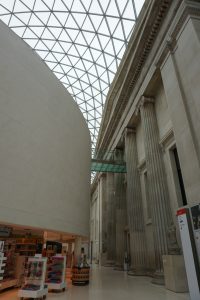It has been exactly a week since we left London. I feel like I had a connection to the city and it felt like home when I got there. It did not take long for my body and mind to adapt to local London time, but it took almost a week for me to get back on to Columbus time.
There were so many things that I really like about our trip, but one thing that stood out most is how we were able to walk anywhere or use public transportation system to get anywhere within a short amount of time. This stood out to me because I do not like to even walk across campus at home, but it is quite enjoyable in London. I walked a minimum of 8.5 miles daily during our stay in London. The option to utilize public transporation or walk from place to place has a very good impact our daily lives, and I think that we should start moving toward that lifestyle at home.
My favorite part of the trip was our long walk day across London. This was one of my favorite day because, I love walking around London and see how the scene, landscape, architecture as we move across the city. This was also a memorable day because my feet was in so much pain toward the end of the day because I have never walk that much in a single day, but the pain was totally worth it. I end up walking barefoot around the Princess Diana memorial to numb my feet so I can keep up with the rest of the group. Now looking back, I think I made the right decisions by walking in the cold water in order to see walk much more later that evening.
Prior to the trip, I was hoping to take the EuroStar to Paris for a day to visit some extended family and some old friends. Someone asked about this topic in class before I got to it and we were not allow to leave the country. It was a little dissapointing at first, but I got over it fast. Now that the trip is over, I am so glad that we were not allow to leave England. There are so much to explore within London alone, a trip to France is pushing for too much. I end up visiting Brighton for a few hours to see the Royal Pavillion and the coast of Britain. Then returned to London and contiuning to explore the amazing city. I felt very safe and like I was at home during my time in England, and it was a good feeling to have while abroad.
Overall, I think this trip was very successful for many reasons. First of all, the weather was very nice during our time in London. Secondly, we were able to adapt and quickly learn how to use the tube and other forms of transportation to explore the city. Lastly, and most importantly, everyone in our group was AWESOME! Hope everyone had as much fun as I did, and hope to go on at least one or two more trips with everyone!

































